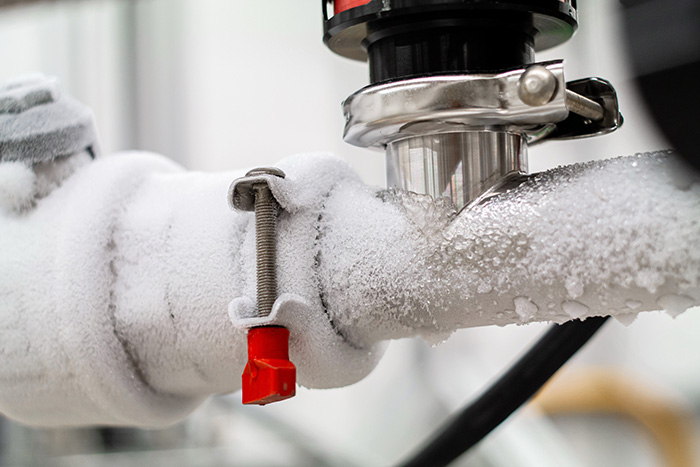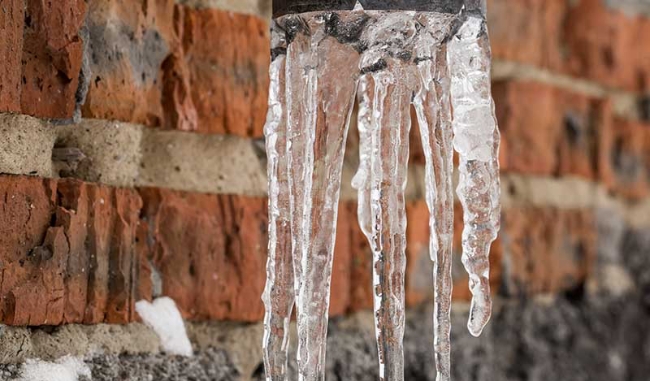Everybody maintains their unique conception on the subject of Winter Plumbing Precautions: Preventing Frozen Pipes.

Winter can damage your pipes, especially by freezing pipes. Below's how to stop it from occurring and what to do if it does.
Intro
As temperature levels decline, the risk of icy pipes rises, possibly bring about pricey repair services and water damage. Recognizing exactly how to avoid frozen pipelines is critical for homeowners in chilly climates.
Avoidance Tips
Protecting susceptible pipes
Cover pipes in insulation sleeves or make use of heat tape to shield them from freezing temperatures. Concentrate on pipes in unheated or outside locations of the home.
Heating strategies
Keep interior rooms appropriately heated, particularly locations with pipes. Open cabinet doors to permit cozy air to distribute around pipes under sinks.
Exactly how to identify icy pipes
Look for lowered water flow from taps, unusual odors or sounds from pipes, and visible frost on exposed pipelines.
Long-Term Solutions
Architectural modifications
Take into consideration rerouting pipes far from exterior walls or unheated areas. Include extra insulation to attic rooms, basements, and crawl spaces.
Upgrading insulation
Purchase high-quality insulation for pipes, attic rooms, and wall surfaces. Correct insulation helps keep constant temperature levels and reduces the danger of frozen pipes.
Safeguarding Exterior Plumbing
Yard tubes and outside taps
Separate and drain pipes yard tubes before winter. Mount frost-proof faucets or cover outside faucets with insulated caps.
Recognizing Icy Pipes
What creates pipes to freeze?
Pipelines freeze when revealed to temperature levels below 32 ° F (0 ° C) for expanded periods. As water inside the pipelines freezes, it broadens, putting pressure on the pipeline walls and possibly causing them to rupture.
Threats and problems
Icy pipes can bring about water system disruptions, home damage, and pricey repair services. Burst pipes can flooding homes and trigger extensive architectural damage.
Indications of Frozen Piping
Determining icy pipes early can prevent them from bursting.
What to Do If Your Pipes Freeze
Immediate activities to take
If you believe icy pipelines, maintain faucets open up to relieve pressure as the ice melts. Utilize a hairdryer or towels soaked in hot water to thaw pipes gradually.
Final thought
Stopping icy pipes needs positive steps and quick reactions. By comprehending the causes, indications, and safety nets, house owners can secure their plumbing during cold weather.
5 Ways to Prevent Frozen Pipes
Drain Outdoor Faucets and Disconnect Hoses
First, close the shut-off valve that controls the flow of water in the pipe to your outdoor faucet. Then, head outside to disconnect and drain your hose and open the outdoor faucet to allow the water to completely drain out of the line. Turn off the faucet when done. Finally, head back to the shut-off valve and drain the remaining water inside the pipe into a bucket or container. Additionally, if you have a home irrigation system, you should consider hiring an expert to clear the system of water each year.
Insulate Pipes
One of the best and most cost-effective methods for preventing frozen water pipes is to wrap your pipes with insulation. This is especially important for areas in your home that aren’t exposed to heat, such as an attic. We suggest using foam sleeves, which can typically be found at your local hardware store.
Keep Heat Running at 65
Your pipes are located inside your walls, and the temperature there is much colder than the rest of the house. To prevent your pipes from freezing, The Insurance Information Institute suggests that you keep your home heated to at least 65 degrees, even when traveling. You may want to invest in smart devices that can keep an eye on the temperature in your home while you’re away.
Leave Water Dripping
Moving water — even a small trickle — can prevent ice from forming inside your pipes. When freezing temps are imminent, start a drip of water from all faucets that serve exposed pipes. Leaving a few faucets running will also help relieve pressure inside the pipes and help prevent a rupture if the water inside freezes.
Open Cupboard Doors
Warm your kitchen and bathroom pipes by opening cupboards and vanities. You should also leave your interior doors ajar to help warm air circulate evenly throughout your home.

I recently found that page on Winter Plumbing Precautions: Preventing Frozen Pipes when doing a search on the search engines. Sharing is caring. Who knows, you might be doing someone a favor. I take joy in your readership.
Start Now